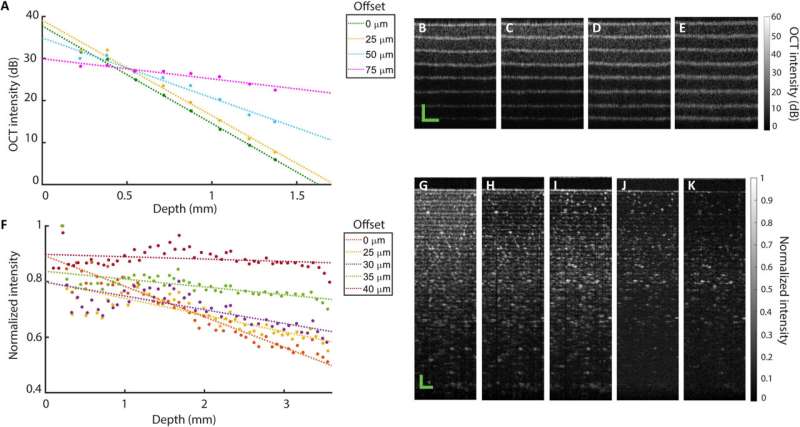This article has been reviewed according to Science X's editorial process and policies. Editors have highlighted the following attributes while ensuring the content's credibility:
fact-checked
peer-reviewed publication
trusted source
proofread
New deep light imaging could improve disease diagnosis

An international team of researchers, in collaboration with the University of St Andrews, have made a technology breakthrough for one of the most important forms of light imaging, optical coherence tomography (OCT), which could revolutionize applications in ophthalmology, dermatology, cardiology, and the early detection of cancer.
The new research, published in Science Advances, led by an international team of experts from the University of Adelaide, Australia, Technical University of Denmark (DTU) in collaboration with the Aerospace Corp in the U.S. and academics from the School of Physics and Astronomy at the University of St Andrews, could improve the diagnosis of diseases.
The advances to date in light imaging have been spectacular. Its use in biomedical imaging has reached new heights in the last decade with its unprecedented combination of simplicity, ease of use to recover highly resolved image information and versatility. Yet, challenges remain, namely recovering information from depth. A challenge due to the scattering of light in tissue which obscures information at depth.
OCT relies on light being backscattered within the sample: this occurs when light passes between different layers of cells for example. It is like the well-known phenomenon in nature of light being scattered in a fog, consisting of droplets of water with a different refractive index than the surrounding air, which scrambles your view. The scattering makes it difficult to see through the fog.
Similarly, cells (membranes and even smaller parts) in biological tissue scatter light making imaging a challenge. In fact, to get a discernible signal from depths beyond 1mm is enormously challenging due to several factors including signal from intervening tissue.
The conventional wisdom is that the OCT signal is dominated by light has undergone a single backscattering event whereas light scattered (scrambled) many times is detrimental to image formation.
The team discovered an alternate viewpoint—that selective collection of such multiply scattered light can lead to improved image contrast at depth, particularly in highly scattering samples. Importantly they showed how this could be implemented in a facile manner with minimal additional optics by displacing the light delivery and collection paths.
Gavrielle Untracht, first author of the paper from DTU, said, "The results of our study could be the start of a new way of thinking about OCT imaging. Its so exciting to contribute to such a technological breakthrough in the well-established OCT field. "
Professor Kishan Dholakia, from the School of Physics and Astronomy at the University of St Andrews, said, "Our study breaks norms in optical imaging and I believe heralds a new path to recovering information at depth. OCT is a world established method to gain useful information on human health—our approach can enhance this even further."
Dr. Peter Andersen, co-corresponding author from DTU, said, "The unique configuration, supported by our modeling, should redefine our view on OCT signal formation—and we can now use this insight to extract more information and to improve diagnosis of disease."
The team believe their breakthrough is poised to defy convention and lead to a step change in recovering images at depth.
More information: Gavrielle R. Untracht et al, Spatially offset optical coherence tomography: Leveraging multiple scattering for high-contrast imaging at depth in turbid media, Science Advances (2023). DOI: 10.1126/sciadv.adh5435




















